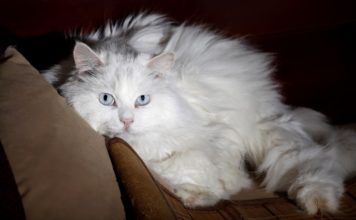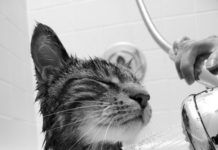Tips for keeping your cat calm at the veterinary clinic
5 tips for using a medical collar on your cat
Dear Doctor – Are my cats contagious?
Dear Doctor – How Can I Quiet my Chatty Cat?
Tail Talk in cats
Myth Buster: Cats and Water
Cat Litter box considerations
Kitten Care Tips
Senior Cat Stopped Using Litter Box
Turf 101
Mousers, Bird-Watchers, Spider Snatchers, and Cricket Nabbers
The Graveyard Shift
If you live with several cats, there's a pretty good chance that you've had at least one four A.M. wake-up call. Whether he wants food, a place on your pillow, or just a bit of playtime, a cat can be mighty persistent.
If you've been getting up to put food in his dish when he sits on your chest at four or five A.M., then you're reinforcing his behavior. Even if you try to hold out as long as possible before you simply can't stand it anymore, every time you get up lets him know his method worked.
Maybe your cat doesn't want food - he merely wants your attention. Out of frustration you may have resorted to locking him out of the bedroom. Although it may work with some cats, in other cases you may end up with having to listen to the endless sound of a cat scratching and pawing at the door or scratching at the carpet.
Cats tend to become more active after dusk. Just as you're winding down from the day, a cat is revving up. After engaging in several catnaps during the day, a cat is ready for play when the sun goes down. You also have to keep in mind that you've been gone all day, so when you come home at night, your cats are stimulated by your presence.
Fortunately, there's an effective and fun method for curbing nocturnal activity base on natural cat behavior.






